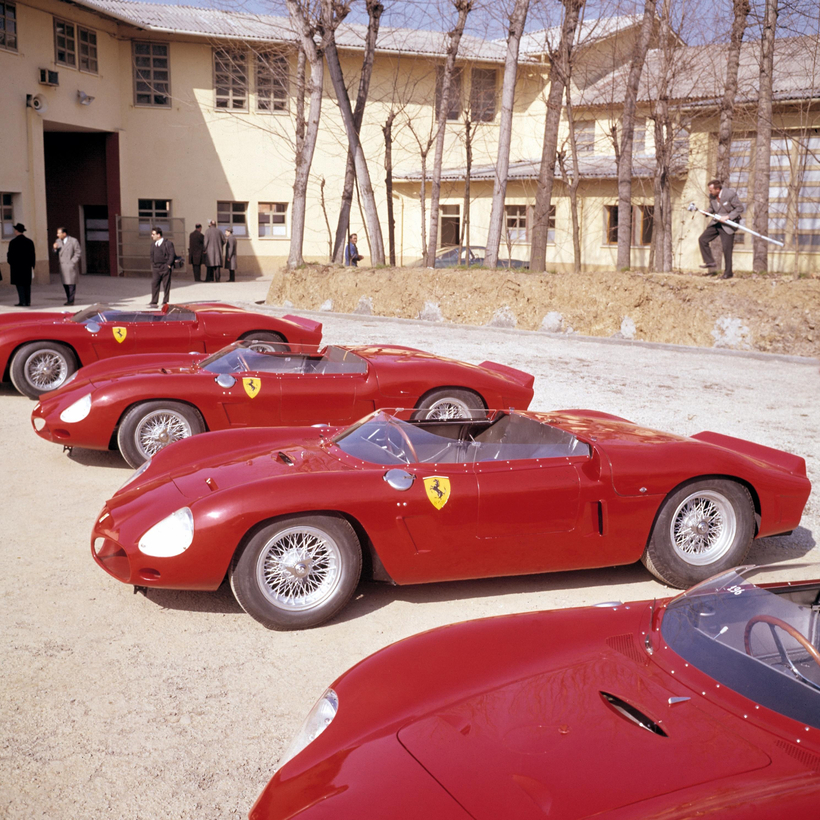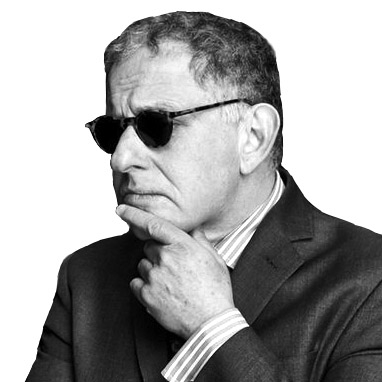What did the Thin White Duke and the not-so-thin Commendatore have in common? We speak, naturally, of British musician David Bowie and Italian racing giant Enzo Ferrari, two highly motivated, 20th-century men who in life shared the enormity of their dreams but little else. Except for one thing: they both saved everything.
Secure from youth in the knowledge that they’d one day become well known, and would be reverently scrutinized following their deaths, both men had a penchant for documenting and preserving their creative output. This was illustrated vividly by a trip I took a few years back to the Bowie traveling museum show, and another just the other week to the premises of Ferrari’s Classiche (Classics) operation in Maranello, Italy.

In Bowie’s case, he was saving a parade of outlandish costumes, scads of musical notation and handwritten lyrics, and high-concept album art. In Ferrari’s, it was not just the countless racing trophies, innumerable press clippings, and sundry ephemera he had accrued as the founder of the world’s leading maker of exotic racing and sporting road cars for close to half a century. Also meticulously preserved for posterity were minute details of his cars—to be exact, of every Ferrari ever built.
This would prove a prescient move because decades later these documentary records re-emerged to form the basis of yet another profitable arm of the storied Italian car-maker, the Classiche program. The program’s latest venture—a driving school aimed solely at Ferrari owners—brought us to Italy, interlopers from the Fourth Estate.

Ferrari died at 90 in 1988, and while he navigated his automobile firm through many a rough financial sea, it wasn’t until after his death that the company sailed into an era of fierce profitability. Publicly traded since 2015, it’s worth $75 billion, making this car-maker with a single factory in Maranello, a small burg about an hour west of Bologna, worth more than Honda, General Motors, or Ford, despite the fact that the bespoke Italian maker’s record production in 2023—a hair over 13,000 cars—constitutes substantially less than one percent of any of these household names’ annual sales volume.
Ferrari’s scrupulous documentation of the details of his company’s mechanical output happens to dovetail perfectly with a modern car market that values Ferrari’s old models higher than those of any other brand. Collectors’ obsessive-compulsive fixation on provenance, originality, and detailed paperwork is supercharged by the limited availability of the early cars and by values that seem to trend forever upward. Not all will reach the jaw-dropping $70.2 million paid in 2018 for a 1963 Ferrari GTO, winner of the 1964 Tour de France, but you get the idea.
Thus, the Classiche program, established in 2006, will for a fee certify your Ferrari’s originality. If it’s not original, the factory can for additional sums try to return it to a state of originality. The company’s storehouses of build records and correspondence are invaluable aids in this process. Walls are lined with red file boxes that contain essential details of each car, helping researchers verify original specifications and equipment.
Depending on the car, an owner seeking the official Ferrari stamp of authenticity might spend anywhere from a few thousand to millions of dollars, confident that it will likely be money well spent, as successful certification can only add to an old Ferrari’s value.

Though most of the company’s more modern cars can be certified at lower cost by their owner’s local Ferrari dealer, many older cars will require shipment to Maranello for close inspection. The day we visited the workshop, there was a fetching example—a lovely, late-1950s 250 California Spyder. In for Classiche certification, it was now having a tubular front-chassis outrigger replaced, following a metallurgical analysis that revealed its previous owner had installed one made from an incorrect, modern alloy after an accident. So out with the new and in with the old—you don’t want to know the cost of keeping it real.
Ferrari’s latest effort to extract additional value from its past production—and the genesis of our trip to Italy—is its Corso Pilota Classiche driving school. Held at the company’s storied two-mile test track in nearby Fiorano Modenese, the immersive two-day course is designed to instruct owners how to conduct their machines on the track and the street. Simultaneously, Ferrari better acquaints owners with the surprisingly modern company, rated by some analysts as the strongest luxury brand in the world today. For the hypothetical 26-year-old tech-bro, master-of-the-universe type who won, say, a 1964 250 GT Le Mans at the Monte Carlo auction, but who doesn’t yet know how to drive a stick shift (back in the day there was no such thing as an automatic Ferrari), this could be a critically useful—as in life- and investment-saving—service.

Booked through one’s preferred dealer or via the company’s MyFerrari app, it is hardly the cheapest driving school one might attend, with fees (including hotels and local transport, but not flights) in the mid-single-digit thousands. Yet, it’s also likely the only one that makes a Ferrari 365 GTB/4 “Daytona” available to its pupils, along with a 1996 550 Maranello, 1975 308 GTS, 1980 GTBi, 1985 3.2 Mondial, and, depending on the day, a gilt-edged 1962 250 Lusso, with a rotating roster of adept instructors—typically, retired racing drivers.
These are not the oldest or most valuable Ferraris ever, and it’s safe to say current Ferrari Formula One driver Charles Leclerc won’t be there to critique your car control or trail-braking technique, but as far as fun is concerned, attending the school—and touring Ferrari’s historic grounds, museums, and buildings, as well as the local restaurants, which take feeding Ferrari staff and visitors quite seriously—helped re-write this visitor’s historical disdain for school.

To be fair, mastering the lost arts of rev-matching and double de-clutching may not be the stuff dreams are made of for most people. But spending time on a course that replicates corners from some of the world’s most challenging racetracks could well help spare Ferrari owners singeing embarrassment down the line—and even if they can afford to pay for repairs, they really won’t want to. Surely, there’s nothing like crashing your multi-million-dollar collector Ferrari in front of a crowd to make you feel like the Man Who Fell to Earth.
Jamie Kitman is a car columnist at AIR MAIL


